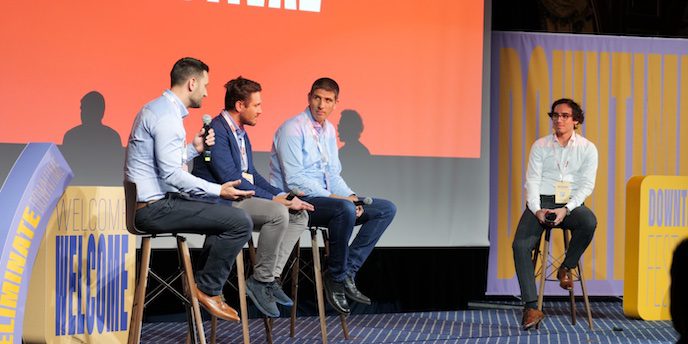

Technology is increasingly important and the data it generates is changing the way construction interacts with the supply chain. The constraints of the past year have thrust data as an enabler into the wider consciousness of construction. Across the board, from the largest OEMs, rental companies, contractors to site workers technology is influencing the way the industry interacts.
Digitization is generating new business models and processes within organizations of all sizes, and outwardly with suppliers and customers. The customer perspective has become increasingly important as more and more data is generated at the point of use. Manufacturers where once engineering development was the product focus are partnering closer to customers to gain insights on their changing needs in this evolving technology environment.
End user and supplier collaboration is driving innovation and involving more complex relationships with possibly competing organizations to add core competencies to ensure solutions can share data effectively.

Collaboration is driving the creation of platforms that generate usable customer information, this helps organizations small and large to interpret these into equipment uptime and higher productivity. This also allows organizations to interrogate stored data for even greater insights. These breakthroughs are due to a new openness between collaborating parties, where honest conversations are leading to sacred cows being challenged and new solutions being discovered.
OEMs are integrating engineering teams within sales to better understand end user requirements. which is helping to define the product from a customer perspective. More organizations are hiring software developers to implement capabilities that collect data and make that transition to usable information. For example, The Netherlands is strict in delivering data on Co2 and NOx emissions, and companies such as Van Werner are using new digital techniques to provide customers the capability to collect emissions data to provide to the authorities. This is a growing concern in most markets where this level of information will be required and is illustrating the positive difference between data and information.
Turning data into information is helping to demystify the digitalization of construction. Every day useful content is created to provide users, rental and OEMs with machine utilization, and a range of other information, as well as meet the requirements of local and national authorities.
Turning data into information is increasingly important for customers that need to understand what OEMs plans for zero emission products means to them. Many OEMs are announcing electric products, some are even providing the wider infrastructure services and products to help customers get this new technology onto site. On the road to sustainability suppliers are really having to support customers through the process. The current energy crisis is a real concern to equipment users, do they stay with diesel vehicles, or switch to expensive electric, but then do they need a diesel generator on site to provide the electricity to power the vehicle?
On the road to sustainability suppliers are really having to support customers through the process.
We are at the start of this path, and customers are more involved in the conversation than ever before. OEM and rental company’s need to articulate their sustainability strategies to build customer confidence in new equipment, and that it will fulfil their business needs and their sustainability obligations.
To remain compliant, Standards for data and telemetry need to be a step ahead of the market. There are new digital products coming to market constantly and we want data from all of these – from hand tools to excavators, to site accommodation and even fencing. We want to create a totally connected site, and there needs to be comprehensive minimal standards as the foundation for site communications. Today, metaphorical barriers are coming down. Where five years ago the participants in this discussion would not have had open conversations on products and machine communications, we now realise that this is the future and collaboration is essential to ensure we remain part the journey.
All organizations are to a point resource limited. So, is it better to focus on one idea and put five people on it, or have five ideas with an individual working on each, and see what emerges? During the Downtime Festival Trackunit announced a new collaboration resource, the ‘Product Portal’ which is an innovative open resource to involve customers, suppliers, and the industry in a wider discussion on product and service developments. Trackunit believes that gaining inputs from outside its own development teams will ensure that product updates and new products will be more finely tuned to the needs of the market. It is an opportunity for us and the market to understand how our developments may impact both upstream and downstream relationships.
New entrants are joining construction every day and bring new ideas, and the construction old guard need to be flexible enough to embrace new processes and work together.
It is often said, it’s good to talk, and what the wide and various conversations that took place during the Downtime Festival demonstrate is that there is a real desire to share ideas and work across common ground to find solutions. New entrants are joining construction every day and bring new ideas, and the construction old guard need to be flexible enough to embrace new processes and work together. In this way we can adapt the best ideas to become the standards of the future and embrace information to drive productivity and growth.
If you missed out on the customer panel discussion at the Downtime Festival, you can catch up with the recording here.
Never miss an insight. We’ll email you when new articles are published on this topic.
